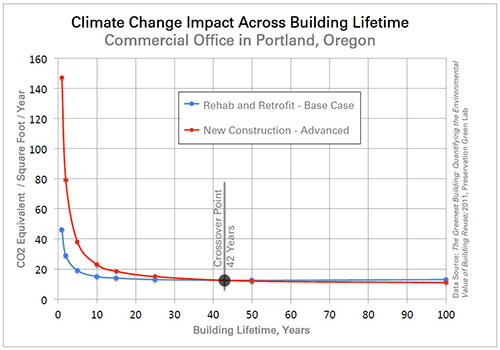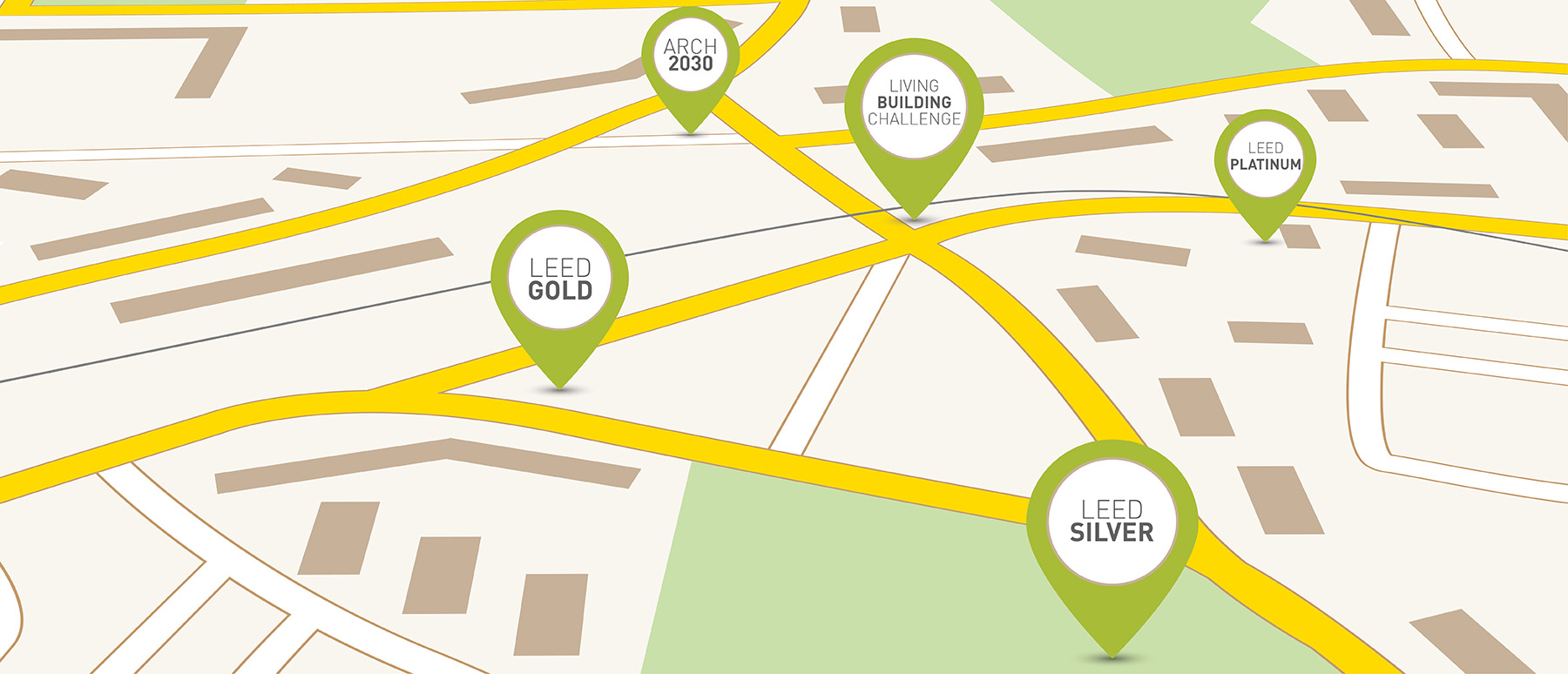The USGBC (U.S. Green Building Council) was founded in 1993 with the mission “To transform the way buildings and communities are designed, built and operated, enabling an environmentally and socially responsible, healthy, and prosperous environment that improves the quality of life.” This is a lofty mission to be sure. Their vision statement goes even further, stating “Buildings and communities will regenerate and sustain the health and vitality of all life within a generation.”
In 2000, the USGBC unveiled a certification system, known as LEED (Leadership in Energy and Environmental Design). In the thirteen years since its inception, LEED has helped transform the way we think about designing and operating buildings. Their four-tiered certification system rates buildings according to expected environmental performance as Certified, Silver, Gold, or Platinum. Moving from one tier to the next through a point system, a primary focus is energy reduction. As the design becomes more energy efficient, points are gathered. Since Platinum is the highest goal, many people treat this as the “destination.”

From an energy and water standpoint, careful examination of the USGBC vision statement brings us to an interesting observation. The ultimate vision is to build buildings that will “regenerate.” That is, they need to give back to the energy grid or the surrounding ecology, not only impose less impact or be neutral. Even a LEED Platinum building does not achieve this goal. With the exception of the sun and wind, the resources we use to power and/or heat our buildings are finite. Arguments abound as to whether any particular resource will last 5, 10, 50 or 100 years. But, one thing is not debatable: we will eventually run out of these resources. So, while LEED Platinum buildings will slow the inevitable march towards depletion, it will not avoid it entirely.
Therefore, we need to go “beyond LEED” and beyond thinking of LEED Platinum as a final destination, but rather as one of the many “off ramps” on the journey to a sustainable and restorative built environment.
How do we do that? Through the Cascadia Chapter of the USGBC, a new metric, called the “The Living Building Challenge” (LBC), was developed. This challenge is to design a building that generates all of its own energy with renewable resources, captures and treats all of its water, takes care of occupants, and is aesthetically beautiful. A “living” campus or neighborhood scales these solutions appropriately to size and function. The Living Building Challenge uses the metaphor of a flower as its unifying theme. The flower’s petals are: Site, Water, Energy, Health, Materials, Equity and Beauty.
Even when we have the ability to meet this challenge consistently with new buildings, we will still only partly on our way to sustainability. Why?
In actuality, retro-fitting the older buildings is far more cost and energy effective than building new.
As noted within USGBCs vision statement, “Buildings and communities will regenerate […].” In the United States, there is 60 billion square feet of built space constructed prior to 2000. The vast majority of this space is not at all energy efficient. Much was constructed prior to the existence of LEED. Even more was built prior to the energy crisis of the 1970’s. Unless we tear down and rebuild these structures, which is entirely unlikely, the new buildings we design and build will need to make up for the inefficiency of these older buildings. Accordingly, new buildings will need to be regenerative. What the older buildings take from the utility grid, these new buildings will need to give back.
In actuality, retro-fitting the older buildings is far more cost and energy effective than building new. A study published in 2011 entitled “The Greenest Building: Quantifying the Environmental Value of Building Reuse” published by Preservation Green Lab in Seattle, WA, with help from the USGBC Cascadia Chapter, Skanska, Green Building Services and others revealed, “Building reuse almost always yields fewer environmental impacts than new construction, when comparing buildings of similar size and functionality.”

The report goes on to state, “The range of environmental savings from building reuse varies widely, based on building type, location, and assumed level of energy efficiency. Savings from reuse are between 4 and 46 percent over new construction when comparing buildings with the same energy performance level.”
These impacts may seem small, but, as stated in the study “if the city of Portland were to retrofit and reuse the single-family homes and commercial office buildings that it is otherwise likely to demolish over the next 10 years, the potential impact reduction would total approximately 231,000 metric tons of CO2 – approximately 15% of their county’s total CO2 reduction targets over the next decade.”
This report finds it takes 10 to 80 years for a new building that is 30% more efficient than an average-performing existing building to overcome, through efficient operations, the negative climate change impacts related to the construction process. For a commercial office building in Portland, that figure is 42 years.
So, we still have a long way to go in constructing restorative buildings and becoming truly sustainable.
Green Building – Going Beyond LEED Certification
LEED has made great strides in creating awareness of green building technologies. It has performed its function of market transformation as well. Products and processes that weren’t common in 2000 are now standard practice. That said, in some respects LEED has diverted our attention from the more fundamental and critical questions: What is truly sustainable? How do we get there?
The answer is one step at a time and one building at a time. But, as the above graphic illustrates, we cannot continue with the status quo. Resource depletion will continue while resource demand will increase. LEED postpones the catastrophe point. The Living Building Challenge implemented at individual building scale will also postpone the inevitable. Only through widespread application of The Living Building Challenge can we avoid the catastrophic cliff ahead of us.

